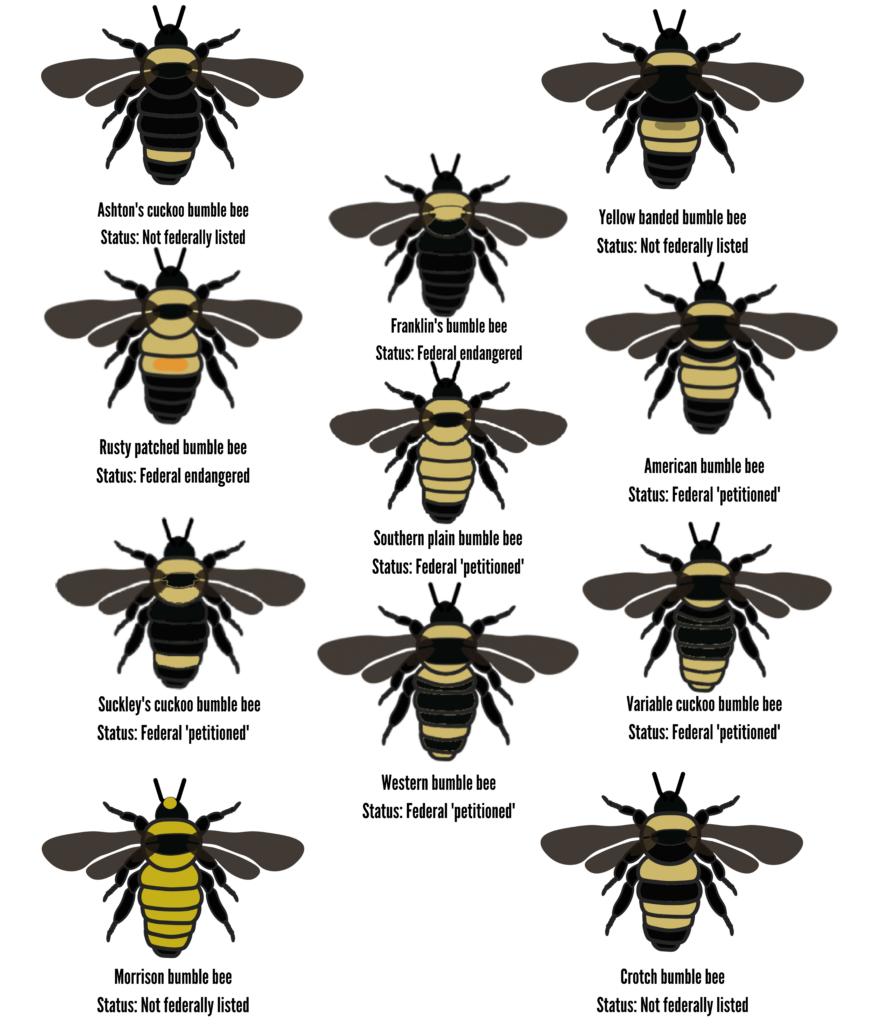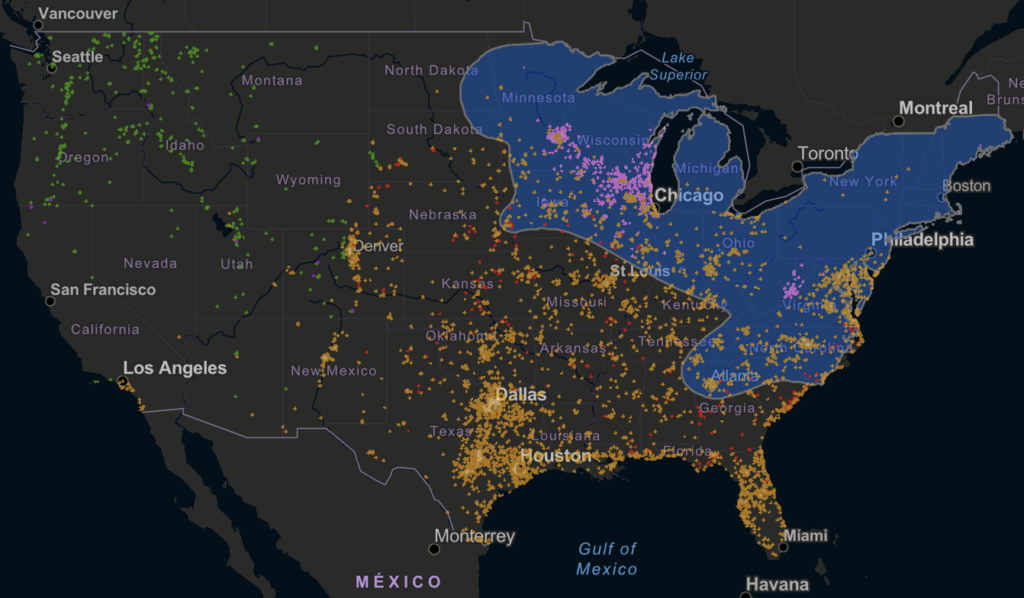
Background
The University of Illinois Chicago has partnered with the Wisconsin Department of Natural Resources and several energy and transportation industry organizations to develop a national voluntary conservation benefit agreement (CBA) to provide habitat for seven species of at-risk bumble bees. This multi-species agreement will focus on several at-risk bumble bee species that collectively span much of the continental U.S. These at-risk species are those that have experienced severe population declines, and include species petitioned, proposed, or already listed under the ESA.
This effort builds on the success of the Monarch CCAA in engaging energy and transportation land managers in voluntary conservation. The at-risk bumble bee conservation benefit agreement is intended to build upon conservation actions from the Monarch CCAA, or allow agreement-specific commitments where preferred. To date, the Monarch CCAA has resulted in over 850,000 acres of habitat commitments. We hope this at-risk bumble bee conservation benefit agreement can yield similar results for other species in need. For more information, please take a look at our CBA WEBINAR or SLIDES.
Your Help is Needed!
Interested in supporting the bumble bee agreement effort? Reach out to Megan Petraitis at mpetrait@uic.edu for more information on how to contribute. We can use your help with:
- Sharing the importance of bumble bee conservation and this agreement in your meetings, webinars, social media, and other outreach.
- Connecting our planning team to knowledgeable resources that can help inform our agreement development.
- Make an in-kind or financial contribution and participate in agreement development.
|
Which Bumble Bees Are Targeted and Where Are They Found?
The agreement currently includes eleven different at-risk bumble bee species that occupy ranges across the continental U.S and face similar conservation needs for their continued survival. The focus of this agreement is subject to change as the development process continues. |
Check out our interactive occurrence areas map to view nationwide ranges for each of the at-risk species targeted by this agreement. These ranges were developed using publicly available, research-grade iNaturalist data from the Global Biodiversity Information Facility. These ranges were developed using occurrence data assembled, maintained, and updated by Leif Richardson of the Xerces Society for Invertebrate Conservation, as used in his book, Bumble Bees of North America: and Identification Guide (2014). These data are the property of multiple individuals and institutions and should not be published without express permissions from Leif Richardson.
What is the Timeline?

Building off of the momentum of the Monarch CCAA, the development of this agreement is expected to be a two year process,with the finalized agreement ready for enrollment by the end of 2024.
Frequently Asked Questions
What type of agreement would this be?
Why is a conservation agreement needed?
What do the conservation measures look like?
How will this Agreement relate to the Monarch CCAA?
Thank You to Our Collaborators!




